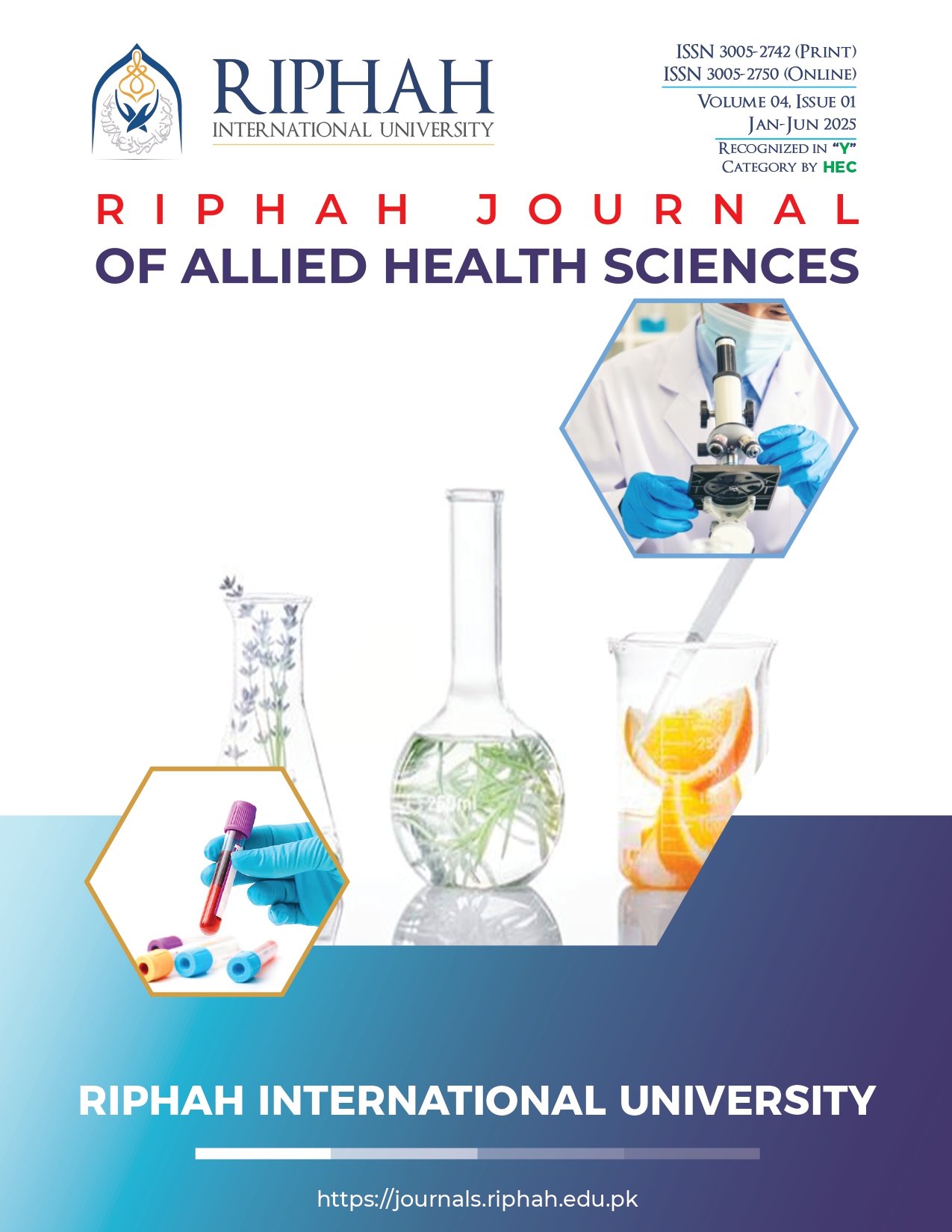Antibiotic Sensitivity of Bacteria Isolated from Otitis Media Patients of Southern Punjab, Pakistan
Keywords:
Antibiotic Resistance, Antibiotic Sensitivity, Multidrug Resistant, Otitis MediaAbstract
Background: Otitis media (OM) is considered as one of the common infections of the ear, particularly among children.
Objective: This study was conducted to determine the prevalence and antibiotic sensitivity of bacteria responsible for OM in local population of Pakistan.
Methodology: A total of 300 ear samples including children and adults were collected from ENT department of Nishtar Hospital with precautionary measures and processed for aerobic bacterial culturing and characterization. Kirby-Bauer disc diffusion method was used for antibiotic susceptibility profiling of isolates.
Results: It was observed that Gram negative bacteria were predominant (73%) in comparison with Gram-positive bacteria. Pseudomonas aeruginosa (35%) was the most predominant in patients of OM, followed by Staphylococcus aureus (27%), Proteus vulgaris (11%), Escherichia coli (8%), Enterobacter spp (8%), Klebsiella spp (5%), Proteus mirabilis (4%), Citrobacter spp (2%), and Serratia spp (1%). Out of all, 34% were resistant to more than three different classes of drugs and hence, were MDR. The majority of the bacterial isolates were sensitive to Amikacin, Aztreonam, Cefaclor, Imipenem and Levofloxacin. However, most of them exhibited resistance towards Amoxicillin/Clavulanic acid, Cefixime, Ceftriaxone and Clarithromycin.
Conclusion: Adequate and cautious use of antimicrobials based on precise knowledge of the susceptibility profile of pathogens is essential for preventing spread of resistance among bacteria.


